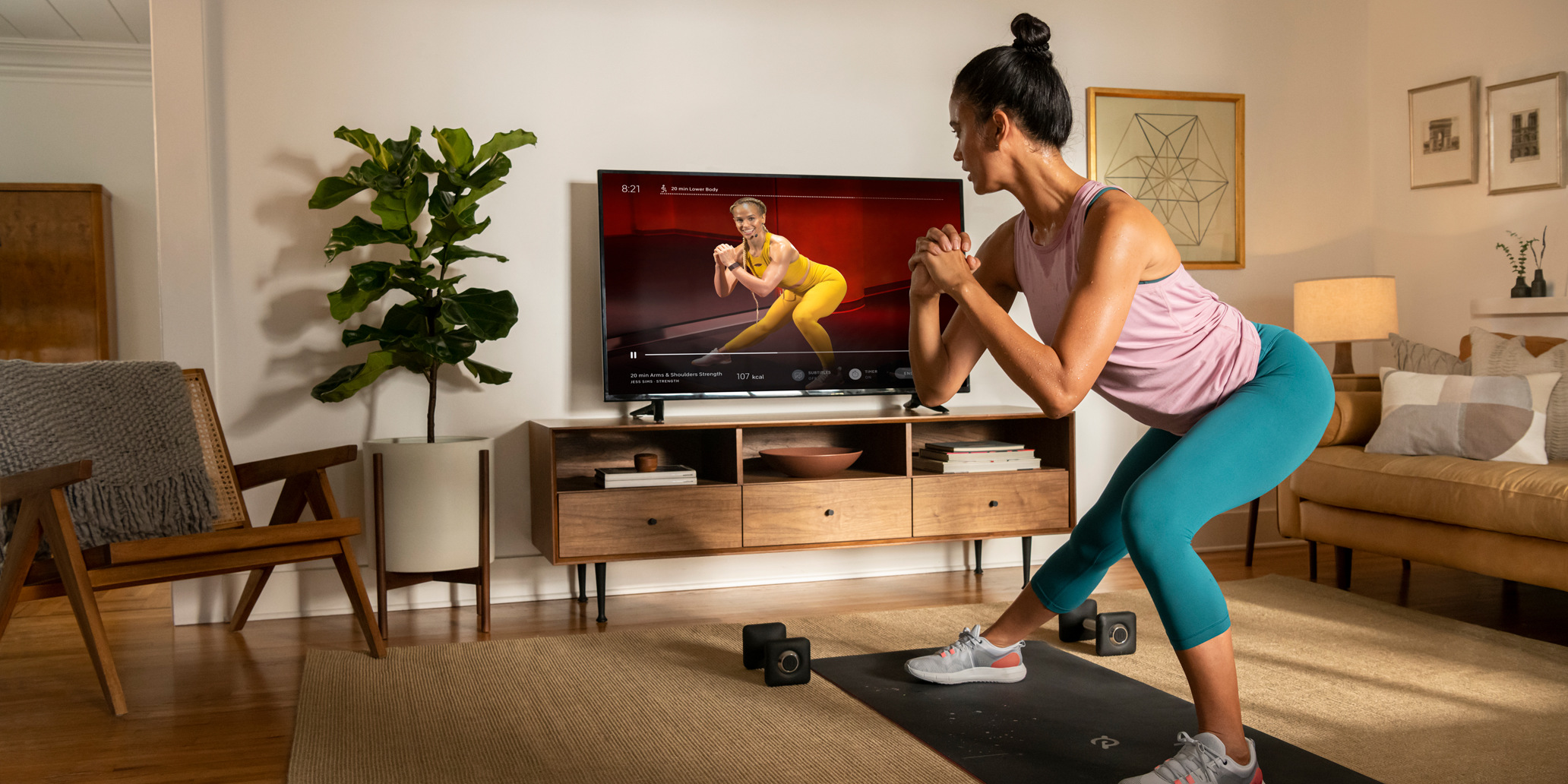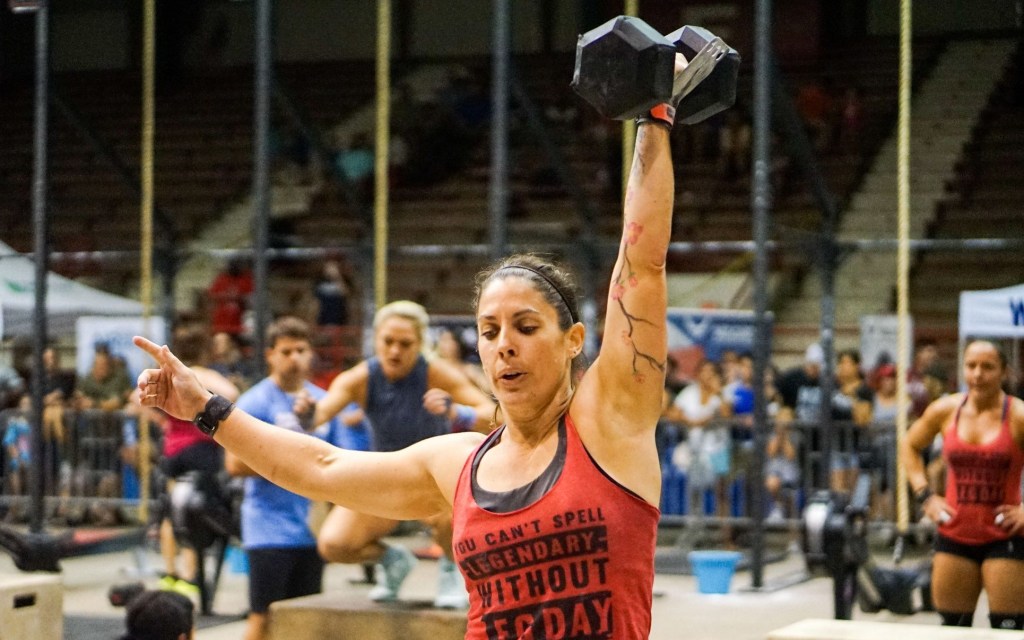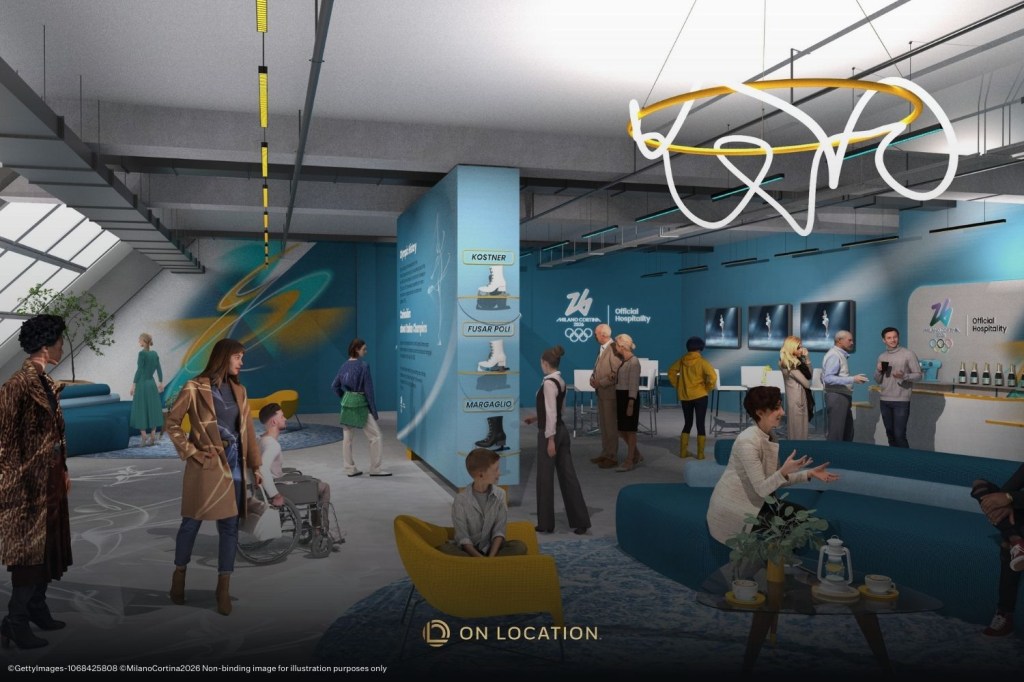The projections are rosy. Peloton’s stock price has surged more than 385%. Tech giant Apple has even entered the game.
2020’s at-home fitness movement — sparked in large part by the pandemic — is expected to continue until COVID-19 has been defeated.
However, there are reasons to question whether the sweat-at-home trend has stamina this time.
“The new thing is the interactive part,” fitness industry veteran Jonathan Goodman said. “There’s a joke among infomercial fitness sellers. Everything that they sell has to have handles and has to fold up because, eventually, it’s going to have to fit in a closet or underneath your bed. I don’t think much has really changed.”
This generation of home workout equipment costs a bit more than a Thighmaster or Gazelle.
Peloton’s high-end bike costs $2,495 and its treadmill goes for $4,295.
Mirror, the interactive home gym play that Lululemon purchased in June, runs $1,495 minus any weights often used in workouts.
Tonal, which has built-in resistance for strength training, retails for $2,995.
Monthly subscriptions for each range from $39 to $49 — about the cost of a monthly gym membership.
By year’s end, the connected fitness equipment segment is projected to comprise 7.5% of the fitness industry, according to research firm CB Insights. That’s up from 2.9% in 2015.
Peloton’s connected fitness subscriptions climbed 137% year-over-year and its revenues grew 232%, according to its last quarterly report released in November.
October sales for home fitness equipment more than doubled 2019, according to The NPD Group.
“Some of the peaks in 2020 will be tough to [match], but I expect interest will remain high and we will see gains against the base of 2019,” said Matt Powell, vice president and senior sports industry advisor at The NPD Group. “Connected will be the key to 2021 and beyond.”
The pandemic resulted in at least a six-month delay in release of CLMBR’s connective climbing machine, although founder and CEO Avrum Elmakis isn’t worried about the demand when it debuts in mid-2021, around the time vaccines are expected to be available for most of the U.S. population.
This begs the question: What will be the new “normal” for fitness?
“I don’t think people are going to rush back to crowded gyms,” Peloton CEO John Foley told Time in May. “I just don’t see that happening.”
Elmakis doesn’t necessarily agree.
“I think nothing takes the place of community and experiencing something in real life with other people [at gyms and boutique fitness businesses],” he said. “Having said that, I think there’s a large percentage of the population that’s kind of adapted and formed new habits.”
“I think there’s a place for both [home and gym workouts],” Elmakis said.
CLMBR is also somewhat rare within the new entries into the home fitness market as it will offer a commercial version of its machine. Well-established brands like Life Fitness, and Icon Health and Fitness, the parent of NordicTrack, Pro-Form and Freemotion, compete in both spaces.
Peloton largely based its business with at-home equipment, but the company signed a deal to acquire Precor — one of the top suppliers of commercial gym equipment — for $420 million on Dec. 21. With the transaction it will create a new commercial division.
“I’d say we have kind of a dual-pronged approach,” Elmakis said. “There are really good bike manufacturers like Stages that make really good bikes, right? No cyclist would say they’d want to ride on a Peloton bike versus a Stages bicycle at a cycling class. What we have is disruptive and it’s a unique form factor that lends itself to kind of this new world economy where I think gym owners are going to be looking for ways to accomplish.”
Gyms big and small are planning for a hybrid approach, something operators have already shifted toward since the shutdowns earlier this year to the re-openings in most of the U.S. after the first wave of the pandemic. The shift to remote training has allowed the fitness business to keep in touch — and in some cases grow — during this time, although that’s been easier for smaller gyms that focused more on community-building.
Not many people understand the task like Adam Zeitsiff, who stepped down as CEO of Gold’s Gym in August after the chain was acquired by RSG Group through a bankruptcy auction. In October, Zeitsiff was tapped as the CEO of Intelivideo, a firm that helps gyms distribute online workouts to their members.
“As somebody who ran a global health club brand and who is now helping gyms go digital, I am extremely bullish on the health club market,” Zeitsiff said. “Health clubs are going to continue to boom. Once we get past this and everyone gets that vaccine in their arms and they’re comfortable, brick and mortar gyms are going to go through the roof like never before. … But anyone who is going to be really successful, they’re going to have offerings for when members are not with them. You need to keep that engagement.”
Goodman, founder of The Personal Trainer Development Center, doesn’t see one major money maker for traditional larger gyms rebounding.
“You’ve got basically two main income streams in large commercial facilities: membership and personal training, Goodman said. “Membership has obviously gone down and it’s going to take a long time to come back. And then you look at personal training, and that’s been turned on its head.”
“Anybody who’s really good is not going to go back because they’ve been away for long enough that they either went off on their own [as a trainer] or they left the industry for other jobs. There’s been a big talent drain,” he said.
The new role for many of those top trainers? Working as Peloton, Apple Fitness Plus, Tonal or Mirror instructors.
















